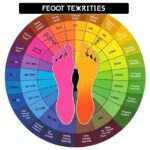Introduction to Nude Sketch
The art of sketching nude figures has a storied history that dates back thousands of years. From the ancient sculptures of Greece to contemporary art studios, nude sketch remains a fundamental practice for artists seeking to understand and celebrate the human form. It is a discipline rooted in anatomy, observation, and the expressive potential of the human body. This article explores the significance of nude sketching, its history, techniques, and its enduring relevance in the art world.
Historical Perspective
Nude art has always held a special place in artistic expression. In ancient Greece, sculptures like the Discobolus and the Venus de Milo exemplify the celebration of idealized human anatomy. These works aimed to depict beauty, proportion, and harmony, serving both aesthetic and philosophical purposes. Similarly, during the Renaissance, artists like Leonardo da Vinci and Michelangelo studied the human body meticulously, producing detailed sketches and anatomical studies that laid the groundwork for realistic figure drawing.
During the 19th and early 20th centuries, nude sketching became an essential part of academic training. Artists were often required to attend life drawing classes where they would sketch nude models—both male and female—to hone their understanding of form, light, and shadow. These sessions emphasized the importance of observing real human anatomy, translating it into expressive and accurate drawings.
The Artistic Significance of Nude Sketching
Nude sketching serves multiple purposes for artists. Primarily, it is a fundamental exercise in understanding anatomy. By studying the human body in various poses, artists gain insight into muscle structure, bone alignment, and proportions. This knowledge is crucial for creating realistic and believable figures in painting, sculpture, or digital art.
Beyond technical mastery, nude sketching also fosters an appreciation for the beauty and complexity of the human form. It encourages artists to observe subtle nuances of posture, gesture, and movement. Many artists find that working from live models helps them develop a sense of immediacy and spontaneity in their work, capturing fleeting moments of expression and emotion.
Furthermore, nude sketches often serve as preparatory studies for larger projects. Artists draft quick gesture sketches to explore composition and dynamics before committing to more detailed work. These sketches can also be highly expressive, emphasizing line, rhythm, and form over fine detail.
Techniques and Approaches
Nude sketching can be approached in various ways, depending on the artist’s style, purpose, and medium. Common techniques include:
- Gesture Drawing: Quick, fluid sketches that capture the essence and movement of the pose. These are often done in 30 seconds to a few minutes, focusing on the overall rhythm rather than details.
- Contour Drawing: Emphasizes the outline of the figure, tracing the edges and key features to understand the body’s structure.
- Light and Shadow Studies: Using shading techniques such as hatching or cross-hatching to depict volume, depth, and the interplay of light on the body.
- Anatomical Studies: Detailed sketches that focus on muscles, bones, and proportions, often used for reference in larger works.
Artists may work with various materials, including charcoal, pencil, ink, or conte crayons. Charcoal, in particular, is favored for its rich, expressive lines and ease of shading, making it ideal for capturing the nuances of the human body.
Ethical and Cultural Considerations
Nude art has sometimes been met with controversy, often due to cultural attitudes towards nudity and sexuality. However, in artistic contexts, the nude is primarily seen as a celebration of form, beauty, and the human condition rather than an expression of sexuality. Respect for models is paramount; professional models are compensated fairly and are often trained to hold poses comfortably for extended periods.
Modern artists approach nude sketching with sensitivity and professionalism. Many art schools and studios establish clear boundaries and guidelines to create a respectful environment. Additionally, the focus remains on artistic study and appreciation rather than objectification.
Contemporary Relevance
Despite the advent of digital technology and new media, nude sketching remains vital in contemporary art education and practice. Many artists continue to attend life drawing classes, both in traditional studios and online platforms. The act of drawing from life fosters skills that are difficult to replicate through digital or photo-based methods.
Moreover, nude sketching has found a place in modern art therapy and mindfulness practices. The process of observing and sketching the human body can be meditative, helping individuals connect with their own bodies and develop body positivity.
Conclusion
Nude sketching is a timeless art form that combines technical skill, anatomical knowledge, and expressive power. Its roots in classical art and continued practice in contemporary settings underscore its importance in understanding human beauty, movement, and emotion. Whether as a foundation for more complex works or as an end in itself, nude sketching invites artists to explore the human body with respect, curiosity, and reverence. As an artistic endeavor, it remains a vital and inspiring discipline that celebrates the diversity and complexity of human life.



